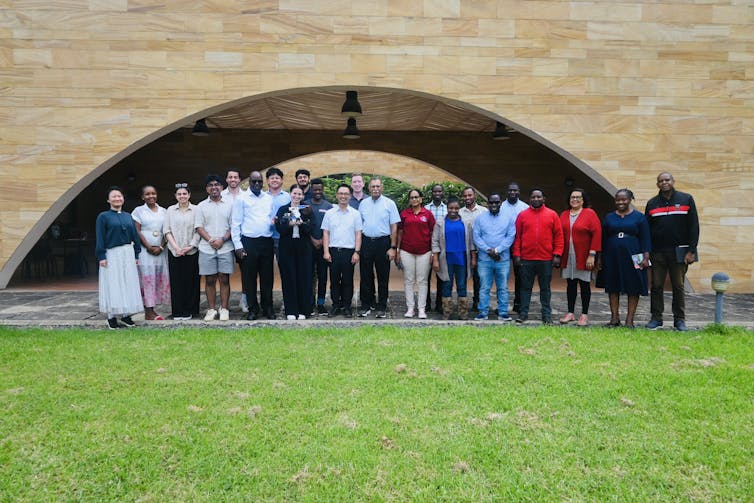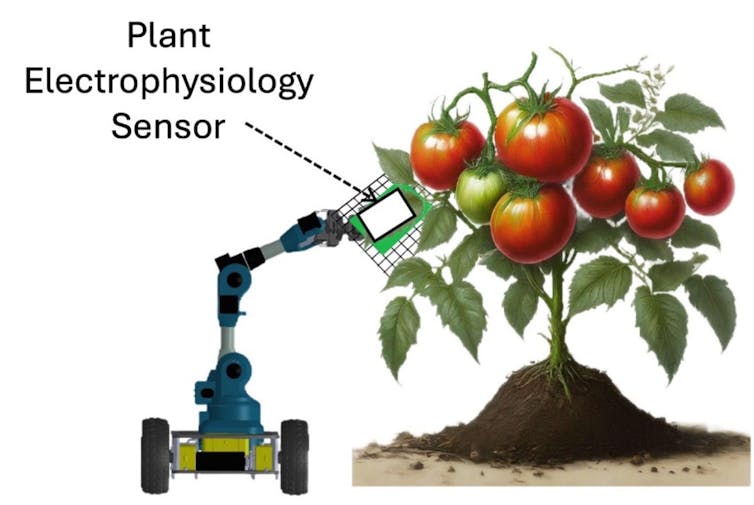Addressing Global Food Insecurity through AI-Powered Sustainable Agriculture
Introduction
Global food insecurity remains a critical challenge, with nearly 828 million people suffering from hunger worldwide, as reported by the Food and Agriculture Organization of the United Nations. Climate change exacerbates this issue by disrupting traditional farming systems, highlighting the urgent need for innovative, resource-efficient agricultural solutions aligned with the Sustainable Development Goals (SDGs), particularly SDG 2 (Zero Hunger) and SDG 6 (Clean Water and Sanitation).
Innovations in AI-Powered Farming
Conventional water management techniques in agriculture, such as drip irrigation and soil moisture sensors, have improved efficiency but still face limitations in accuracy and responsiveness, often leading to resource wastage. Considering that agriculture accounts for the majority of global water use and that over two billion people face water scarcity (UN Water Facts), there is a pressing need for smarter water management systems.

(Woo Soo Kim)
- Development of AI-Powered Sensing Robots: At Simon Fraser University (SFU), the School of Mechatronics Systems Engineering has developed a prototype AI-powered robot that autonomously monitors the water needs of tomato plants by detecting electrical signals from the plants themselves (SFU Research).
- Plant Electrophysiology Integration: This robot uses plant electrophysiology responses as real-time indicators of plant health and hydration, enabling precise and dynamic water management.
- Water Efficiency and Waste Reduction: By eliminating guesswork and manual labor in irrigation, the system promotes efficient water use, reducing waste and optimizing crop health, contributing directly to SDG 6 (Clean Water and Sanitation) and SDG 12 (Responsible Consumption and Production).
Technological Advances Supporting Sustainable Development
- AI and Robotics in Agriculture: AI-powered systems enhance water efficiency, reduce chemical runoff, and optimize crop yields (Recent Studies).
- Non-Invasive Plant Monitoring: Advances in robotics enable continuous, precise monitoring of plant health through electrical signals, facilitating timely interventions (Plant Signal Monitoring).
- Integration with Multi-Spectral Imaging: Combining electrical sensing with machine learning and multi-spectral imaging improves disease detection and stress monitoring, creating comprehensive plant health management systems (Comprehensive Monitoring).

(Woo Soo Kim)
Scaling AI Solutions from Greenhouses to Global Fields
While the prototype shows promise in controlled greenhouse environments, the broader impact of AI-driven water management depends on scalable, adaptable solutions tailored to diverse agricultural contexts worldwide. This aligns with SDG 17 (Partnerships for the Goals) by emphasizing international collaboration.
- Regional Engagement: SFU’s team has collaborated with agricultural communities in Tanzania and Asia-Pacific countries including Singapore, the Philippines, Japan, and South Korea to understand local challenges related to water scarcity and climate change.
- Accessible Technology Development: Efforts focus on creating affordable, user-friendly sensor tools and scalable AI-robotic systems suitable for variable environmental and infrastructural conditions.
- International Partnerships: Organizations such as the Food and Agriculture Organization, the Association of Pacific Rim Universities, and the World Bank actively promote cross-border research, capacity building, and technology transfer to accelerate smart agriculture adoption globally.

(Alana McPherson)
Contributions to Sustainable Development Goals
- SDG 2 – Zero Hunger: AI sensing robots enable real-time plant monitoring, reducing resource waste and improving crop yields to combat hunger and malnutrition.
- SDG 6 – Clean Water and Sanitation: Precision irrigation technologies optimize water use, addressing water scarcity challenges.
- SDG 12 – Responsible Consumption and Production: Efficient resource management reduces environmental impact and promotes sustainable agriculture.
- SDG 13 – Climate Action: Adaptive farming technologies help mitigate the effects of climate change on food production.
- SDG 17 – Partnerships for the Goals: International collaboration accelerates technology transfer and capacity building for sustainable agriculture worldwide.
Conclusion
The development and deployment of AI-powered autonomous farming systems represent a transformative approach to achieving sustainable food production. By integrating plant electrophysiology, robotics, and AI, these innovations support efficient water and nutrient management, reduce waste, and enhance crop resilience. Scaling these technologies from controlled environments to diverse global agricultural settings requires strong international partnerships, supportive policies, and knowledge sharing. Such efforts will empower farmers worldwide to contribute to the United Nations’ Sustainable Development Goals, particularly ending hunger and ensuring sustainable water use, thereby fostering resilient and sustainable food systems for the future.
1. Sustainable Development Goals (SDGs) Addressed or Connected
- SDG 2: Zero Hunger
- The article focuses on addressing global food insecurity and hunger, highlighting the need to end hunger and malnutrition.
- SDG 6: Clean Water and Sanitation
- Water scarcity and efficient water use in agriculture are major themes, emphasizing sustainable water management.
- SDG 9: Industry, Innovation and Infrastructure
- Development and deployment of AI-powered sensing robots and precision agriculture technologies reflect innovation and infrastructure development.
- SDG 13: Climate Action
- The article discusses climate change impacts on agriculture and the need for adaptive, resource-efficient farming solutions.
- SDG 17: Partnerships for the Goals
- International collaboration, knowledge sharing, and partnerships are emphasized as critical for scaling solutions globally.
2. Specific Targets Under Those SDGs Identified
- SDG 2: Zero Hunger
- Target 2.3: By 2030, double the agricultural productivity and incomes of small-scale food producers, including through secure and equal access to technology.
- Target 2.4: Ensure sustainable food production systems and implement resilient agricultural practices.
- SDG 6: Clean Water and Sanitation
- Target 6.4: Substantially increase water-use efficiency across all sectors, including agriculture, and ensure sustainable withdrawals.
- SDG 9: Industry, Innovation and Infrastructure
- Target 9.5: Enhance scientific research, upgrade technological capabilities of industrial sectors, including sustainable infrastructure and innovation in agriculture.
- SDG 13: Climate Action
- Target 13.1: Strengthen resilience and adaptive capacity to climate-related hazards and natural disasters in all countries.
- SDG 17: Partnerships for the Goals
- Target 17.6: Enhance North-South, South-South and triangular regional and international cooperation on and access to science, technology and innovation.
- Target 17.17: Encourage and promote effective public, public-private and civil society partnerships.
3. Indicators Mentioned or Implied to Measure Progress
- SDG 2 Indicators
- Prevalence of undernourishment and hunger (implied by the reference to 828 million people suffering from hunger).
- Crop yield per hectare (implied through optimization of crop yields via AI and robotics).
- Income levels of small-scale food producers (implied by focus on smallholder farms and technology accessibility).
- SDG 6 Indicators
- Water-use efficiency in agriculture (explicitly addressed through AI-powered precision irrigation and water management).
- Proportion of water withdrawn and reused sustainably (implied by reduction of water waste).
- SDG 9 Indicators
- Research and development expenditure in agriculture technology (implied by prototype development and innovation).
- Number of small-scale producers using sustainable technologies (implied by deployment of affordable AI sensing robots).
- SDG 13 Indicators
- Number of countries with strategies for climate resilience in agriculture (implied by international collaboration and adaptation to climate change).
- SDG 17 Indicators
- Number of international partnerships and technology transfer initiatives (explicitly mentioned).
- Access to technology and innovation in developing regions (implied by focus on Asia-Pacific and Tanzania).
4. Table of SDGs, Targets, and Indicators
| SDGs | Targets | Indicators |
|---|---|---|
| SDG 2: Zero Hunger |
|
|
| SDG 6: Clean Water and Sanitation |
|
|
| SDG 9: Industry, Innovation and Infrastructure |
|
|
| SDG 13: Climate Action |
|
|
| SDG 17: Partnerships for the Goals |
|
|
Source: theconversation.com






